Pass Your CompTIA A+ Certification Easy!
CompTIA A+ Certification Exams Questions & Answers, Accurate & Verified By IT Experts
Instant Download, Free Fast Updates, 99.6% Pass Rate.

$89.98
Or Purchase CompTIA A+ Exams Individually
| 220-1101 | CompTIA A+ Certification Exam: Core 1 | $69.99 | Add to cart |
| 220-1102 | CompTIA A+ Certification Exam: Core 2 | $69.99 | Add to cart |
Download Free CompTIA A+ Practice Test Questions VCE Files
| Exam | Title | Files |
|---|---|---|
Exam 220-1101 |
Title CompTIA A+ Certification Exam: Core 1 |
Files 1 |
Exam 220-1102 |
Title CompTIA A+ Certification Exam: Core 2 |
Files 1 |
CompTIA A+ Certification Exam Dumps & Practice Test Questions
Prepare with top-notch CompTIA A+ certification practice test questions and answers, vce exam dumps, study guide, video training course from ExamCollection. All CompTIA A+ certification exam dumps & practice test questions and answers are uploaded by users who have passed the exam themselves and formatted them into vce file format.
CompTIA A+ Step-by-Step: Achieve Certification and Unlock IT Careers"
CompTIA A+ certification is widely regarded as the foundational credential for anyone entering the field of information technology. It validates essential skills required for IT support, help desk, and technical roles while providing a solid foundation for further certifications. Recognized globally, this certification equips candidates with the knowledge and confidence needed to manage, troubleshoot, and maintain computer systems, networks, and devices effectively.
For individuals seeking to build a career in IT, CompTIA A+ serves as the entry point that opens doors to numerous opportunities. Whether you are interested in working with hardware, software, networking, or security, this certification demonstrates competence across a broad range of technology areas. It is vendor-neutral, meaning the skills acquired are applicable across multiple platforms and technologies rather than tied to a specific brand or product.
Who Should Pursue CompTIA A+
CompTIA A+ is designed for entry-level IT professionals or anyone looking to validate their technical knowledge. It is particularly valuable for:
High school or college graduates aiming to start a career in IT
Professionals seeking a career transition into technology
Individuals already working in IT support roles who want to formalize and expand their knowledge
Enthusiasts who want a structured approach to learning foundational IT skills
This certification is ideal for those who want hands-on experience with real-world scenarios. Unlike purely theoretical credentials, CompTIA A+ emphasizes practical problem-solving, preparing candidates to tackle technical challenges they will encounter in professional environments.
Core Benefits of CompTIA A+
The CompTIA A+ certification provides several advantages for aspiring IT professionals. Some of the most significant benefits include:
Career Opportunities
Holding this certification opens doors to entry-level positions in IT, including help desk technician, IT support specialist, field service technician, and technical support analyst. Employers recognize A+ as proof of essential skills, making candidates more competitive in the job market.
Skill Validation
CompTIA A+ confirms that a candidate has a strong understanding of hardware, software, networking, and security fundamentals. It assures employers that certified professionals can troubleshoot, maintain, and optimize IT systems effectively.
Professional Credibility
Certification enhances professional credibility, signaling to employers and colleagues that you are committed to developing your career. It demonstrates technical competence and a willingness to adhere to industry standards.
Foundation for Advanced Learning
CompTIA A+ serves as a stepping stone to more advanced certifications such as CompTIA Network+, Security+, and Cloud+. It establishes a strong technical base upon which specialized skills can be built.
Increased Earning Potential
Certified IT professionals typically earn higher salaries than their non-certified counterparts. The combination of verified skills and practical experience can lead to better compensation and advancement opportunities.
Overview of the Exam
The CompTIA A+ certification requires passing two separate exams, each designed to test different skill areas.
Core 1 (220-1101)
Core 1 focuses on hardware, networking, mobile devices, and troubleshooting. Candidates are evaluated on their ability to identify, install, configure, and maintain computer components and network devices.
Key domains in Core 1 include:
PC and mobile device hardware
Networking concepts and devices
Hardware troubleshooting and maintenance
Virtualization and cloud computing basics
Peripheral devices
The exam combines multiple-choice questions, drag-and-drop activities, and performance-based simulations that mimic real-world scenarios. These interactive elements ensure candidates can apply their knowledge practically rather than relying solely on memorization.
Core 2 (220-1102)
Core 2 centers on operating systems, software troubleshooting, security, and operational procedures. Candidates are tested on their ability to manage and maintain operating systems, identify and resolve software issues, and implement security protocols.
Key domains in Core 2 include:
Windows, macOS, Linux, and mobile OS configuration
Security fundamentals and threat mitigation
Software troubleshooting techniques
Operational procedures, safety, and professionalism
Best practices for IT documentation and communication
Both exams typically consist of around 90 questions each, with a mix of question types that assess practical skills and theoretical knowledge. Candidates have approximately 90 minutes per exam, making time management an essential part of success.
Skills Developed Through CompTIA A+
The certification emphasizes a wide range of technical and operational skills that are essential for IT professionals.
Hardware Management
Candidates learn to identify, install, configure, and maintain various hardware components, including processors, memory, storage devices, motherboards, and peripherals. Understanding the interactions between these components is critical for troubleshooting and optimizing system performance.
Networking Fundamentals
Networking knowledge is crucial for IT roles. CompTIA A+ covers IP addressing, common protocols, wireless networks, and basic troubleshooting techniques. Candidates learn to set up and maintain both wired and wireless networks, ensuring reliable connectivity and performance.
Operating Systems
Proficiency with multiple operating systems is a key component of the certification. Candidates gain hands-on experience installing, configuring, and maintaining Windows, macOS, Linux, and mobile OS platforms. Understanding system architecture and file management is critical for effective troubleshooting.
Security Awareness
CompTIA A+ introduces candidates to essential security concepts, including malware, phishing, access control, and encryption. Understanding these fundamentals enables IT professionals to protect systems and data against common threats.
Software Troubleshooting
Troubleshooting skills are a core focus of the certification. Candidates learn to diagnose and resolve issues with operating systems, applications, and devices. Hands-on exercises help develop the ability to identify root causes and implement effective solutions.
Operational Procedures
IT professionals must follow best practices for safety, documentation, and professional communication. CompTIA A+ covers procedures for maintaining a secure, organized, and efficient work environment. This includes handling sensitive data, following environmental protocols, and communicating effectively with clients and team members.
Preparation Strategies
Effective preparation is critical for passing the CompTIA A+ exams. The following strategies can help candidates succeed:
Structured Study Plan
Developing a study plan that covers all exam objectives ensures comprehensive preparation. Breaking down study sessions by domain allows candidates to focus on specific areas while maintaining overall progress.
Study Materials
Use a variety of resources, including books, online courses, video tutorials, and practice exams. Different formats reinforce learning and provide multiple perspectives on complex topics.
Hands-On Experience
Practical experience is essential. Candidates should work with physical devices, set up home labs, or use virtual machines to simulate real-world troubleshooting scenarios. This hands-on approach builds confidence and reinforces theoretical knowledge.
Practice Exams
Taking practice exams helps candidates familiarize themselves with the exam format, identify weak areas, and improve time management. Repeated exposure to sample questions enhances problem-solving skills and reduces exam anxiety.
Community Engagement
Engaging with online forums, study groups, and IT communities provides additional support. Candidates can share experiences, ask questions, and gain insights from others who have successfully completed the certification.
Real-World Applications
The skills acquired through CompTIA A+ certification are immediately applicable in professional settings. Certified professionals can:
Diagnose and repair hardware and software issues efficiently
Configure and maintain networks for small businesses or organizations
Implement basic security measures to protect sensitive data
Provide technical support to end-users, ensuring smooth operations
Document and communicate technical processes effectively
These abilities make certified candidates valuable assets to employers, especially in environments where IT reliability and responsiveness are crucial.
Exam Tips and Best Practices
To maximize success on the CompTIA A+ exams, candidates should consider the following tips:
Review exam objectives carefully to ensure all topics are covered
Focus on areas of weakness identified through practice tests
Simulate real-world scenarios through hands-on practice
Read questions carefully during the exam to avoid misinterpretation
Manage time effectively to complete all questions within the allotted period
Stay updated on current technology trends, as exams reflect evolving industry standards
Career Growth and Opportunities
CompTIA A+ certification is an entry point that leads to diverse career paths in IT. Initial roles often include help desk technician, IT support specialist, and technical support analyst. Over time, certified professionals can progress to advanced positions such as network administrator, systems administrator, cybersecurity specialist, or IT manager.
The certification also provides a foundation for pursuing additional credentials such as CompTIA Network+, Security+, and Cloud+. Each subsequent certification builds upon the skills and knowledge gained from A+, enabling long-term career development and increased earning potential.
Maintaining Certification
CompTIA A+ certification is valid for three years. Renewal can be achieved through Continuing Education (CE) credits, which may include completing additional courses, passing related exams, or participating in relevant professional activities. Maintaining certification demonstrates ongoing commitment to professional development and ensures skills remain current in a rapidly evolving field.
CompTIA A+ certification represents a significant milestone for anyone entering the IT profession. It validates essential technical skills, fosters problem-solving abilities, and enhances professional credibility. By providing a solid foundation in hardware, software, networking, and security, the certification equips candidates to handle real-world IT challenges confidently.
With careful preparation, hands-on practice, and a commitment to continuous learning, individuals can successfully earn the certification and leverage it as a stepping stone to a rewarding career in technology. Whether starting as a help desk technician or aspiring to advanced IT roles, CompTIA A+ provides the knowledge, skills, and confidence necessary to thrive in the dynamic world of information technology.
CompTIA A+ Exam Breakdown: Core 1 and Core 2
The CompTIA A+ certification is composed of two separate exams, Core 1 (220-1101) and Core 2 (220-1102). Each exam evaluates specific technical skills and competencies required for entry-level IT professionals. Understanding the structure and focus areas of each exam is crucial for effective preparation and success.
Core 1 primarily emphasizes hardware, networking, mobile devices, and troubleshooting, while Core 2 concentrates on operating systems, software troubleshooting, security, and operational procedures. Both exams include multiple-choice questions, performance-based tasks, and drag-and-drop simulations to assess both theoretical knowledge and practical application.
Core 1 (220-1101) Overview
Core 1 assesses candidates on their ability to manage, troubleshoot, and maintain computer hardware and networking components. It provides a foundation for IT professionals to handle everyday technical issues in an organization or support environment.
Hardware Knowledge
One of the central domains of Core 1 is hardware. Candidates are expected to identify, install, configure, and maintain a variety of components, including:
Motherboards and processors
RAM and storage devices
Power supplies and cooling systems
Peripheral devices such as printers, monitors, and input devices
Understanding the interactions between components, diagnosing hardware issues, and performing replacements or upgrades are essential skills tested in this section. Performance-based questions simulate real-world scenarios, challenging candidates to troubleshoot problems effectively.
Networking Fundamentals
Networking is another critical focus area of Core 1. Candidates must understand networking concepts, including:
TCP/IP protocols and addressing
Wireless networking standards and configurations
Network devices like switches, routers, and access points
LAN, WAN, and basic cloud connectivity
Exam questions may involve identifying network issues, configuring basic networks, or interpreting network diagrams. Practical knowledge of network troubleshooting is crucial for success.
Mobile Devices
With the growing prevalence of mobile technology, Core 1 also covers mobile devices such as smartphones and tablets. Candidates learn to:
Configure and troubleshoot mobile operating systems
Install applications and manage connectivity
Understand security measures and mobile device management (MDM)
Handle synchronization and backup issues
This ensures IT professionals can support users across both traditional computers and modern mobile devices.
Hardware and Network Troubleshooting
Core 1 emphasizes diagnostic skills. Candidates are evaluated on their ability to identify the root cause of problems, whether hardware failures, connectivity issues, or configuration errors. Troubleshooting questions often include scenarios where multiple solutions are possible, requiring logical reasoning and systematic problem-solving.
Virtualization and Cloud Concepts
Although not as deep as specialized cloud certifications, Core 1 introduces virtualization and cloud computing concepts. Candidates should understand:
Virtual machines and their purpose
Basic cloud service models
Integration of cloud resources into local networks
This knowledge ensures IT professionals can support modern infrastructure environments that increasingly rely on virtualization and cloud services.
Core 2 (220-1102) Overview
Core 2 focuses on operating systems, software troubleshooting, security, and operational procedures. It builds on the foundational knowledge from Core 1 and prepares candidates to handle more advanced technical tasks.
Operating System Installation and Configuration
Candidates are expected to work with multiple operating systems, including:
Windows (installation, configuration, updates)
macOS and Linux basics
Mobile operating systems like iOS and Android
The exam tests the ability to perform installations, manage user accounts, configure system settings, and troubleshoot OS-specific issues. Knowledge of system architecture and file management is critical.
Software Troubleshooting
Core 2 evaluates problem-solving skills related to software and applications. Candidates must:
Diagnose application errors
Resolve operating system failures
Understand compatibility issues
Implement solutions for software malfunctions
Performance-based questions simulate real-world problems, requiring candidates to apply systematic troubleshooting methods rather than rote memorization.
Security Fundamentals
Security is a critical component of Core 2. Candidates learn to recognize and mitigate common threats, such as:
Malware, viruses, and ransomware
Phishing attacks and social engineering
Data breaches and unauthorized access
The exam also covers preventive measures, including firewalls, encryption, strong authentication practices, and secure mobile device usage. Candidates are expected to apply these practices in practical scenarios.
Operational Procedures
Operational procedures emphasize the professional and procedural aspects of IT support. Candidates must understand:
Documentation and change management best practices
Safety protocols and proper handling of equipment
Environmental considerations, including ESD protection and waste disposal
Effective communication with end-users and team members
This ensures IT professionals not only solve technical problems but do so following organizational and industry standards.
Troubleshooting Scenarios
Core 2 includes scenarios that test holistic problem-solving skills, combining hardware, software, and networking knowledge. Candidates may encounter questions requiring them to:
Identify multiple causes of a single problem
Recommend appropriate preventive measures
Apply systematic troubleshooting methodologies
Evaluate the impact of user actions and environmental factors
These questions simulate real-world responsibilities, emphasizing the practical application of knowledge gained in Core 1 and Core 2.
Exam Question Types
Both exams use a variety of question types to assess candidates thoroughly:
Multiple Choice Questions: Single or multiple correct answers, testing theoretical knowledge and understanding
Performance-Based Questions: Interactive simulations that mimic real-world IT problems
Drag-and-Drop: Questions requiring candidates to match terms, steps, or concepts accurately
Familiarity with these formats is essential for exam success. Candidates should practice with sample questions and performance-based exercises to build confidence and efficiency.
Scoring and Time Management
Each exam consists of approximately 90 questions, and candidates have 90 minutes to complete them. Scores are typically reported on a scale of 100 to 900, with a passing score generally around 675 for Core 1 and 700 for Core 2.
Time management is crucial. Candidates should allocate time carefully, answer easier questions first, and return to more challenging scenarios. Practice exams are helpful for developing pacing strategies and identifying areas that require additional study.
Preparing for Core 1 and Core 2
Effective preparation involves a combination of study methods:
Structured Study Plan
Create a study schedule that covers all domains for both exams. Allocate more time to areas of weakness and balance theoretical study with hands-on practice.
Study Materials
Use a mix of books, online courses, video tutorials, and lab exercises. This variety reinforces learning and provides multiple perspectives on complex topics.
Hands-On Labs
Simulating real-world scenarios through labs is essential. Candidates should work with physical hardware, configure networks, and troubleshoot operating systems to gain practical experience.
Practice Exams
Taking practice tests helps candidates familiarize themselves with the exam format, question types, and time constraints. It also identifies knowledge gaps that require further study.
Community Support
Engage with online forums, study groups, or professional networks. Sharing experiences and insights with others preparing for the exam can provide valuable tips, motivation, and encouragement.
Real-World Applications of Core Knowledge
The skills tested in Core 1 and Core 2 are immediately applicable in professional IT environments. Certified individuals can:
Install and configure hardware and software for organizations
Troubleshoot network connectivity issues and improve performance
Manage operating systems across desktops, servers, and mobile devices
Implement basic security measures to protect data and systems
Follow professional operational procedures and communicate effectively with users
These competencies make certified professionals valuable assets in workplaces where IT systems are critical to daily operations.
Transitioning Beyond A+
CompTIA A+ certification serves as a foundation for further certifications and career growth. After gaining experience, candidates may pursue:
CompTIA Network+: Deepens networking knowledge and troubleshooting skills
CompTIA Security+: Focuses on cybersecurity principles and threat management
Cloud+: Expands skills in cloud infrastructure and virtualization
This progression allows IT professionals to specialize and pursue higher-level roles while leveraging the practical skills developed through A+.
Understanding the structure, domains, and expectations of Core 1 and Core 2 is essential for anyone pursuing CompTIA A+ certification. Core 1 focuses on hardware, networking, and mobile devices, while Core 2 emphasizes operating systems, software troubleshooting, security, and operational procedures. Together, they provide a comprehensive foundation for entry-level IT professionals.
By thoroughly preparing, practicing hands-on skills, and familiarizing themselves with exam formats, candidates can confidently approach the exams. CompTIA A+ certification not only validates technical knowledge but also demonstrates professionalism, problem-solving abilities, and readiness to contribute effectively in real-world IT environments.
With dedication, structured preparation, and practical experience, candidates can successfully earn the certification and open doors to rewarding IT careers with opportunities for growth, specialization, and advancement.
Preparing for the CompTIA A+ Exam
CompTIA A+ certification requires a strategic approach to preparation. Since the exams cover a wide range of technical and operational topics, candidates need to combine theoretical knowledge with practical experience. A structured study plan, reliable resources, and hands-on practice are essential for success.
Effective preparation not only increases the chances of passing but also ensures that candidates can apply the knowledge in real-world IT environments. This article outlines key strategies, study tips, and resources to help candidates excel in both Core 1 (220-1101) and Core 2 (220-1102) exams.
Understanding the Exam Objectives
Before beginning any preparation, it is crucial to thoroughly review the exam objectives for both Core 1 and Core 2. CompTIA publishes detailed lists of domains and subtopics covered in each exam. These objectives provide a roadmap for study, ensuring that candidates focus on all required knowledge areas.
Exam objectives typically include:
Hardware components and troubleshooting
Networking fundamentals and device configuration
Mobile device setup and management
Operating systems installation, configuration, and troubleshooting
Software troubleshooting and problem-solving techniques
Security principles and threat mitigation
Operational procedures, safety, and communication
By breaking down study sessions according to these objectives, candidates can systematically cover each domain and track progress efficiently.
Creating a Study Plan
A well-organized study plan is essential for covering the breadth of material required for CompTIA A+. Consider the following steps:
Set a Timeline
Determine the amount of time available before the exam and allocate study sessions accordingly. For most candidates, a 2–4 month preparation period is sufficient, depending on prior experience and familiarity with IT concepts.
Divide by Domains
Break the material into manageable sections based on exam domains. Focus on one area at a time, allowing for deeper understanding and retention. For example, start with hardware components, then move to networking, followed by operating systems and security.
Include Regular Review
Schedule periodic review sessions to reinforce knowledge and identify weak areas. Repetition and active recall help strengthen memory and improve retention of complex topics.
Incorporate Hands-On Practice
Practical exercises should be integrated into the study plan. Allocate time to work with devices, install operating systems, configure networks, and troubleshoot common issues. Hands-on experience reinforces theoretical concepts and prepares candidates for performance-based exam questions.
Recommended Study Resources
Using a variety of study materials enhances understanding and provides multiple perspectives on technical concepts. Consider the following resources:
Books and Study Guides
Comprehensive CompTIA A+ books provide detailed explanations, diagrams, and practice questions. They often include step-by-step guides for configuring hardware, troubleshooting software, and managing networks. Books are particularly useful for in-depth study and reference.
Online Courses
Video tutorials and interactive courses offer visual and practical learning experiences. Many courses include demonstrations, virtual labs, and quizzes to reinforce learning. Online platforms allow candidates to study at their own pace and revisit challenging topics.
Practice Exams
Practice exams simulate the actual test environment and provide insight into question types, timing, and difficulty. They help identify areas that need improvement and build confidence for the real exam. Repeated practice can reduce anxiety and improve performance under time constraints.
Hands-On Labs
Setting up a home lab or using virtual machines allows candidates to apply knowledge in realistic scenarios. Labs can include installing operating systems, configuring networks, troubleshooting devices, and testing security measures. Practical experience is critical for mastering performance-based questions.
Study Groups and Forums
Engaging with peers and online communities provides additional support. Study groups allow candidates to discuss concepts, share tips, and collaborate on problem-solving exercises. Online forums offer advice from certified professionals and access to real-world scenarios.
Hands-On Practice Strategies
Hands-on experience is one of the most important aspects of CompTIA A+ preparation. Candidates should focus on practical skills, including:
Hardware Assembly and Troubleshooting
Practice assembling and disassembling computers, identifying components, and replacing faulty parts. Troubleshoot common hardware issues such as power failures, memory errors, and peripheral malfunctions.
Networking Setup
Configure wired and wireless networks, assign IP addresses, and troubleshoot connectivity issues. Familiarity with switches, routers, and network cables helps candidates understand real-world network configurations.
Operating System Management
Install and configure multiple operating systems, manage user accounts, perform updates, and troubleshoot common OS problems. Virtual machines are an excellent tool for practicing without requiring multiple physical devices.
Security Implementation
Practice applying basic security measures, including antivirus installation, firewall configuration, and secure authentication practices. Understand common threats and how to mitigate them in different environments.
Software Troubleshooting
Simulate application errors and operating system failures, and practice systematic troubleshooting steps. Learn to identify the root cause of problems, implement solutions, and verify successful resolution.
Effective Study Techniques
In addition to resources and hands-on practice, certain study techniques can enhance learning and retention:
Active Learning
Engage with the material actively by taking notes, summarizing concepts, and teaching them to others. Explaining complex topics reinforces understanding and memory retention.
Flashcards and Quizzes
Use flashcards for quick review of key terms, commands, and concepts. Regular self-quizzing helps reinforce knowledge and identifies areas needing further study.
Scenario-Based Practice
Practice problem-solving using real-world scenarios. This approach develops critical thinking and prepares candidates for performance-based questions.
Consistent Study Routine
Establish a consistent study schedule to maintain momentum. Short, focused sessions are often more effective than long, infrequent study periods. Consistency reinforces learning and reduces burnout.
Focus on Weak Areas
Regularly assess knowledge using practice tests and identify weak areas. Allocate additional time to reinforce these topics, ensuring balanced preparation across all exam domains.
Tips for Exam Day
Proper preparation extends to the day of the exam. Candidates should consider the following:
Arrive Early: Allow time to check in, settle nerves, and review key concepts briefly
Manage Time: Allocate sufficient time for all questions, answering easier ones first and returning to challenging questions later
Read Questions Carefully: Ensure understanding of each question before answering, paying attention to details and instructions
Stay Calm: Maintain focus and confidence, applying knowledge systematically to solve problems
Use Scratch Paper: For performance-based questions, sketch diagrams or take notes to organize thoughts
Building Confidence Through Practice
Confidence is built through repetition and hands-on experience. Candidates who simulate real-world scenarios, complete practice exams, and engage in labs are better prepared to handle the dynamic nature of the CompTIA A+ exams. Practical experience ensures that knowledge is not only theoretical but also applicable in professional settings.
Beyond Exam Preparation
CompTIA A+ certification is more than just passing exams. It prepares candidates for actual IT roles by developing problem-solving skills, troubleshooting abilities, and professional competence. Effective preparation also encourages continuous learning, a critical aspect of a successful IT career.
After certification, professionals are equipped to:
Support end-users and resolve technical issues efficiently
Maintain hardware and software systems
Configure and troubleshoot networks
Implement security measures and adhere to operational procedures
Communicate technical information effectively to non-technical users
These skills make certified individuals valuable assets to employers and lay the groundwork for career growth and specialization.
Maintaining Motivation and Focus
Studying for CompTIA A+ can be challenging, especially for those balancing work or other responsibilities. Maintaining motivation is crucial for success:
Set Clear Goals: Define what success looks like and keep the end goal in mind
Track Progress: Monitor achievements and milestones to maintain momentum
Reward Milestones: Celebrate completing chapters, labs, or practice exams to stay motivated
Stay Positive: Embrace challenges as learning opportunities rather than obstacles
Maintaining focus and a positive mindset throughout preparation ensures consistent progress and readiness for exam day.
Preparing for the CompTIA A+ exam requires a balanced approach combining study, hands-on practice, and exam strategy. A structured study plan, comprehensive resources, and scenario-based learning are key components of effective preparation.
By focusing on practical experience, active learning techniques, and consistent review, candidates can develop the confidence and skills necessary to excel in both Core 1 and Core 2 exams. Beyond certification, these efforts prepare individuals for real-world IT roles, fostering problem-solving abilities, technical competence, and professional growth.
CompTIA A+ is not just a credential; it is a gateway to a rewarding career in information technology. With diligent preparation, commitment, and practical experience, candidates can successfully earn certification and embark on a path toward long-term IT success.
Career Paths and Opportunities After CompTIA A+ Certification
CompTIA A+ certification serves as a gateway to a wide range of IT careers. It equips candidates with foundational knowledge in hardware, software, networking, and security, making them valuable assets in any technology-driven organization. Beyond providing technical expertise, A+ certification demonstrates professionalism, problem-solving skills, and a commitment to continuous learning.
This article explores the various career opportunities available to CompTIA A+ certified professionals, salary expectations, career growth potential, and how this certification can serve as a stepping stone to advanced IT roles.
Entry-Level IT Roles
CompTIA A+ is primarily designed for individuals entering the IT workforce. The certification prepares candidates for several entry-level positions, including:
IT Support Specialist
IT support specialists assist users with computer-related issues, including hardware failures, software problems, and network connectivity challenges. Responsibilities may include:
Installing and configuring hardware and software
Diagnosing technical issues and providing solutions
Managing user accounts and access permissions
Maintaining IT documentation and reports
This role provides hands-on experience with a wide range of technologies, forming a solid foundation for career growth.
Help Desk Technician
Help desk technicians serve as the first point of contact for technical support within an organization. Key responsibilities include:
Responding to user queries and troubleshooting issues
Providing guidance on software and hardware usage
Escalating complex problems to higher-level technicians
Maintaining a knowledge base for common issues
Help desk roles help professionals develop communication skills, problem-solving abilities, and an understanding of organizational IT operations.
Field Service Technician
Field service technicians are responsible for maintaining and repairing equipment on-site at client locations. Their duties often include:
Installing and configuring hardware and network devices
Troubleshooting equipment malfunctions
Providing technical support to users in various environments
Ensuring compliance with safety and operational standards
This role combines technical expertise with hands-on experience and customer interaction, providing a well-rounded skill set.
Technical Support Analyst
Technical support analysts focus on resolving complex IT issues and maintaining system reliability. Responsibilities may include:
Monitoring system performance and identifying potential problems
Implementing software updates and patches
Troubleshooting network, hardware, and software issues
Collaborating with IT teams to optimize system performance
This position develops analytical thinking and advanced troubleshooting skills, making it a strong foundation for higher-level IT roles.
Salary Expectations
CompTIA A+ certification can positively impact earning potential. While salaries vary depending on location, experience, and job role, certified professionals often earn more than non-certified peers. Typical salary ranges include:
IT Support Specialist: $40,000 – $60,000 annually
Help Desk Technician: $35,000 – $55,000 annually
Field Service Technician: $40,000 – $65,000 annually
Technical Support Analyst: $45,000 – $70,000 annually
These figures reflect entry-level positions, with higher salaries achievable through experience, specialization, and additional certifications.
Career Growth Opportunities
CompTIA A+ certification is a stepping stone for career advancement in IT. Professionals can pursue additional certifications and roles to specialize in areas such as networking, cybersecurity, and cloud computing. Common pathways include:
CompTIA Network+
Network+ builds on the skills gained from A+, focusing on networking technologies, protocols, and troubleshooting. Certified professionals can pursue roles such as network administrator, network support specialist, or IT infrastructure technician.
CompTIA Security+
Security+ emphasizes cybersecurity fundamentals, including threat analysis, risk management, and security protocols. Professionals can pursue roles such as cybersecurity analyst, information security specialist, or IT security administrator.
CompTIA Cloud+
Cloud+ focuses on cloud infrastructure, virtualization, and cloud management. This certification prepares candidates for cloud engineer, cloud administrator, or IT systems specialist roles.
Vendor-Specific Certifications
After CompTIA A+, candidates may explore certifications from major technology vendors, including Microsoft, Cisco, and VMware. These credentials provide specialized expertise and open doors to advanced technical roles.
Specialized IT Roles
Beyond entry-level positions, A+ certification provides the foundation to pursue specialized IT careers. Examples include:
Systems Administrator
Systems administrators manage and maintain an organization’s IT infrastructure, including servers, networks, and applications. Responsibilities often include:
Installing and configuring server hardware and software
Monitoring system performance and security
Managing user accounts and permissions
Ensuring backup and disaster recovery procedures are in place
A+ certification provides the basic skills needed to understand system components and troubleshoot issues effectively.
Network Administrator
Network administrators oversee the organization’s network infrastructure, ensuring reliable connectivity and security. Key duties include:
Configuring and maintaining network devices
Monitoring network performance and resolving connectivity issues
Implementing security measures and access controls
Collaborating with IT teams to optimize network efficiency
Network+ certification is typically pursued after A+ to enhance networking knowledge and career prospects.
Cybersecurity Analyst
Cybersecurity analysts focus on protecting systems and data from threats. Responsibilities include:
Monitoring networks for security breaches
Investigating and responding to incidents
Implementing security measures and policies
Conducting vulnerability assessments and risk analysis
A+ certification provides foundational knowledge in security practices, making it a valuable first step toward a cybersecurity career.
IT Project Support
IT project support professionals assist with planning, implementing, and managing IT projects. Their role often includes:
Coordinating project resources and timelines
Assisting with system upgrades and deployments
Documenting project progress and technical procedures
Collaborating with cross-functional teams
A+ certification ensures professionals have the technical understanding necessary to contribute effectively to IT projects.
The Value of Soft Skills
While technical skills are essential, soft skills play a critical role in career success. CompTIA A+ professionals often interact directly with end-users, making communication, problem-solving, and customer service skills vital. Important soft skills include:
Effective verbal and written communication
Active listening and empathy
Teamwork and collaboration
Critical thinking and problem-solving
Adaptability and continuous learning
Employers highly value IT professionals who can combine technical expertise with strong interpersonal skills.
Real-World Applications of A+ Skills
The skills gained through CompTIA A+ certification are applicable across various industries, including:
Corporate IT departments
Educational institutions
Healthcare organizations
Government agencies
Technology service providers
In these environments, certified professionals troubleshoot hardware and software issues, manage networks, implement security measures, and ensure smooth IT operations. The practical skills developed through A+ certification enable professionals to contribute immediately and effectively in their roles.
Advancing Your Career After A+
CompTIA A+ certification is just the beginning of a career in IT. With experience and additional training, professionals can advance to higher-level roles, including:
Systems Engineer
Network Engineer
IT Manager
Cybersecurity Specialist
Cloud Solutions Architect
Continuous learning, hands-on experience, and pursuing advanced certifications are key factors in career advancement. Professionals who demonstrate initiative and expertise are often considered for leadership roles and higher salaries.
Professional Networking and Opportunities
Joining professional networks, online communities, and industry groups can enhance career growth. Networking allows professionals to:
Learn about job openings and career opportunities
Share experiences and insights with peers
Stay informed about technology trends and best practices
Gain mentorship and guidance from experienced professionals
Active engagement in professional communities can accelerate career progression and open doors to specialized roles.
CompTIA A+ certification lays the foundation for a rewarding and versatile career in IT. It prepares candidates for entry-level roles while providing the skills and credibility necessary for long-term professional growth. Certified individuals can pursue diverse career paths, including IT support, network administration, cybersecurity, systems administration, and project support.
The certification also serves as a stepping stone for advanced credentials, enabling specialization and higher-level opportunities. By combining technical expertise with soft skills, practical experience, and continuous learning, A+ professionals can achieve career success and make significant contributions to their organizations.
Whether starting as a help desk technician or aspiring to advanced IT roles, CompTIA A+ certification equips professionals with the knowledge, skills, and confidence to thrive in a dynamic and technology-driven workplace.
Maintaining Your CompTIA A+ Certification
CompTIA A+ certification is valid for three years from the date of earning it. Maintaining the certification is essential for demonstrating ongoing proficiency in IT skills and staying current with industry developments. Continuous learning and professional growth are crucial in the ever-evolving technology landscape, where new hardware, software, and security challenges emerge constantly.
Maintaining certification ensures that IT professionals remain competitive in the job market and demonstrates a commitment to professional development. It also enables access to more advanced certifications and career opportunities.
Continuing Education for CompTIA A+
CompTIA provides a Continuing Education (CE) program that allows professionals to renew their certification without retaking exams. The CE program is flexible and offers multiple ways to earn renewal credits, accommodating diverse learning styles and career paths.
Earning CE Credits
There are several methods for earning CE credits for CompTIA A+ renewal:
Completing higher-level CompTIA certifications, such as Network+, Security+, or Cloud+
Participating in approved training courses, webinars, and workshops
Publishing IT-related content, such as articles or whitepapers
Attending industry conferences and events
Completing relevant college courses or university programs
Each method earns a specific number of CE credits, and candidates must accumulate 20 CEUs (Continuing Education Units) within the three-year period to renew the certification.
Advantages of Continuing Education
Participating in continuing education has multiple benefits:
Keeps professionals up-to-date with current technologies and industry trends
Enhances technical skills and knowledge
Demonstrates dedication to professional growth and lifelong learning
Improves career prospects and earning potential
Engaging in ongoing education ensures that IT professionals remain effective and adaptable in their roles.
Advancing Beyond A+ Certification
CompTIA A+ serves as a foundational credential, enabling professionals to pursue more advanced certifications and specialized career paths. Building on A+ skills can open doors to higher-level IT roles and increased earning potential.
CompTIA Network+
Network+ certification focuses on networking concepts, protocols, troubleshooting, and security. Professionals with Network+ credentials can pursue roles such as network administrator, network support specialist, or IT infrastructure technician. This certification builds on A+ knowledge, deepening expertise in network management and problem-solving.
CompTIA Security+
Security+ emphasizes cybersecurity fundamentals, including threat analysis, risk management, and security protocols. A+ certified professionals can use this certification to move into roles such as cybersecurity analyst, IT security administrator, or information security specialist. Security+ provides essential knowledge to protect systems, data, and networks from modern cyber threats.
CompTIA Cloud+
Cloud+ certification prepares professionals to manage and maintain cloud infrastructure, virtualization, and cloud services. Cloud+ knowledge enables IT professionals to pursue roles such as cloud administrator, cloud engineer, or systems specialist. This credential is particularly valuable as organizations increasingly adopt cloud solutions for business operations.
Advanced Vendor Certifications
Beyond CompTIA certifications, professionals may pursue vendor-specific credentials, including:
Microsoft certifications for system administration, cloud, or Azure solutions
Cisco certifications for networking, security, and enterprise infrastructure
VMware certifications for virtualization and cloud management
Vendor-specific certifications offer specialized knowledge and access to advanced roles, complementing the foundational skills developed through CompTIA A+.
Long-Term Career Growth
CompTIA A+ is the first step in a structured career path that allows IT professionals to advance from entry-level roles to senior and specialized positions. Key strategies for long-term career growth include:
Gaining Hands-On Experience
Practical experience is essential for career progression. Entry-level positions allow professionals to apply their knowledge, solve real-world problems, and build confidence. Over time, hands-on experience enables candidates to handle complex technical challenges and take on higher responsibilities.
Pursuing Advanced Certifications
Additional certifications demonstrate expertise in specialized areas and open doors to higher-level roles. Professionals should plan a certification roadmap that aligns with career goals, gradually building knowledge and credentials.
Developing Soft Skills
Soft skills are equally important for long-term success. Effective communication, teamwork, problem-solving, and time management are critical in IT roles. Professionals who combine technical expertise with strong interpersonal skills are often considered for leadership and managerial positions.
Networking and Professional Development
Building a professional network and engaging with IT communities provides access to mentorship, job opportunities, and industry insights. Attending conferences, joining forums, and participating in professional groups enhances knowledge and visibility in the field.
Staying Updated with Industry Trends
Technology evolves rapidly, and IT professionals must stay current with emerging trends, tools, and best practices. Regularly reading industry publications, following tech news, and experimenting with new technologies ensures that skills remain relevant and competitive.
Specialized Career Opportunities
After gaining experience and additional certifications, IT professionals can explore specialized career paths, including:
Systems Administrator
Systems administrators manage servers, networks, and IT infrastructure. Responsibilities include installing and configuring systems, monitoring performance, implementing security measures, and troubleshooting complex issues. A+ certification provides foundational knowledge to support systems administration tasks effectively.
Network Engineer
Network engineers design, implement, and maintain organizational networks. They optimize performance, ensure security, and resolve connectivity issues. Combining A+ knowledge with Network+ or Cisco certifications equips professionals for success in network engineering roles.
Cybersecurity Specialist
Cybersecurity specialists protect systems, networks, and data from threats. They monitor for vulnerabilities, respond to incidents, and implement proactive security measures. A+ certification serves as the foundation for understanding security fundamentals before pursuing specialized cybersecurity roles.
Cloud Solutions Architect
Cloud architects design and manage cloud-based solutions for organizations. Responsibilities include planning cloud infrastructure, implementing best practices, and ensuring scalability and security. Cloud+ or Azure certifications, combined with foundational A+ skills, prepare professionals for this advanced role.
IT Manager or Team Lead
Experienced IT professionals may progress to managerial positions, overseeing teams, projects, and organizational technology strategies. Strong technical knowledge, leadership skills, and effective communication are essential for success in these roles.
Continuous Learning and Adaptability
The technology landscape is constantly evolving, requiring IT professionals to remain flexible and proactive in their learning. Continuous education and practical experience ensure that professionals adapt to new tools, platforms, and security challenges.
Key practices include:
Participating in workshops and webinars
Engaging with online training platforms
Experimenting with emerging technologies in lab environments
Seeking mentorship from experienced professionals
Adaptability and a commitment to lifelong learning are critical for sustaining long-term success in IT careers.
Real-World Impact of CompTIA A+ Certification
CompTIA A+ certified professionals make a tangible impact on their organizations by:
Resolving technical issues quickly and efficiently
Maintaining reliable IT systems and networks
Implementing security measures to protect data
Supporting end-users and improving productivity
Contributing to strategic IT initiatives and projects
These contributions enhance organizational efficiency and reinforce the value of certified IT professionals in the workforce.
Conclusion
CompTIA A+ certification is not just an entry-level credential; it is a foundation for a lifelong IT career. Maintaining certification through continuing education ensures that professionals remain current with industry standards and technological advancements. By pursuing advanced certifications, gaining hands-on experience, and developing soft skills, IT professionals can advance to specialized and leadership roles.
Long-term career growth is achieved through a combination of practical expertise, continuous learning, professional networking, and adaptability. CompTIA A+ equips professionals with the skills, confidence, and credibility necessary to thrive in dynamic IT environments.
With dedication to maintaining and expanding knowledge, A+ certified professionals can build a rewarding and sustainable career in IT, navigating a pathway that leads from entry-level support roles to advanced technical, specialized, and managerial positions.
ExamCollection provides the complete prep materials in vce files format which include CompTIA A+ certification exam dumps, practice test questions and answers, video training course and study guide which help the exam candidates to pass the exams quickly. Fast updates to CompTIA A+ certification exam dumps, practice test questions and accurate answers vce verified by industry experts are taken from the latest pool of questions.
CompTIA CompTIA A+ Video Courses


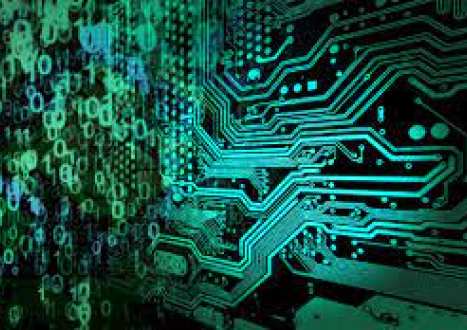


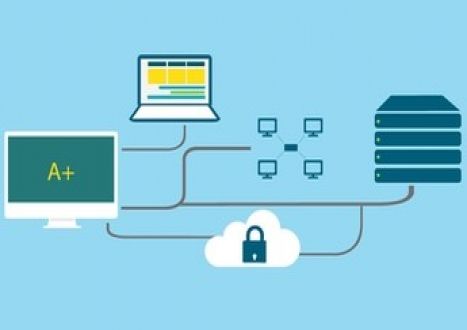






Top CompTIA Certification Exams
Site Search:




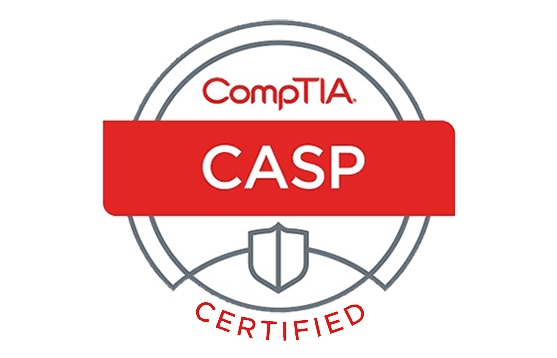
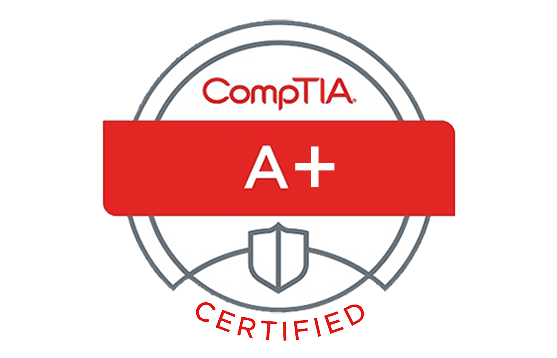
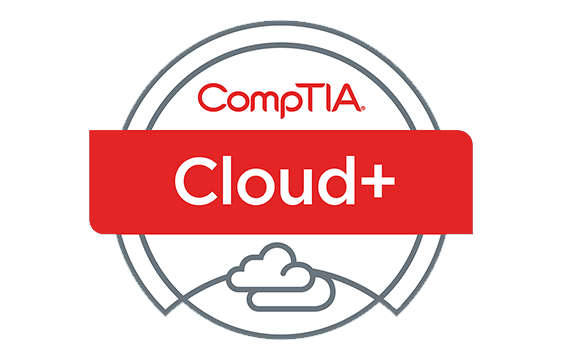
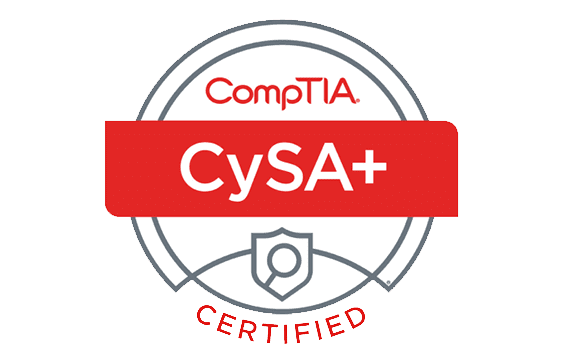
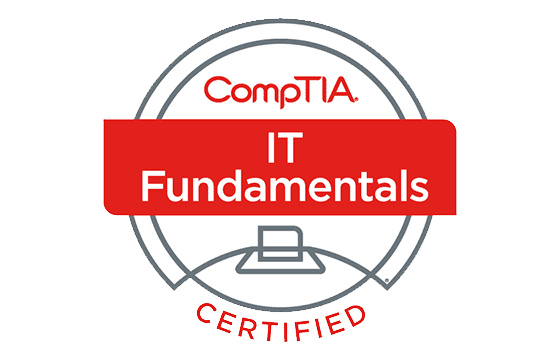
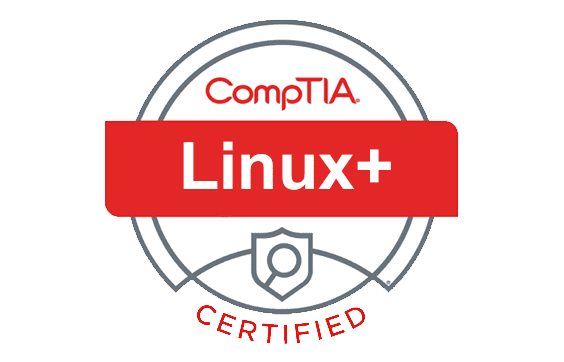
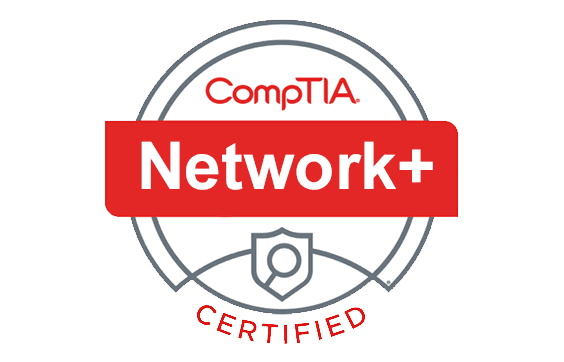

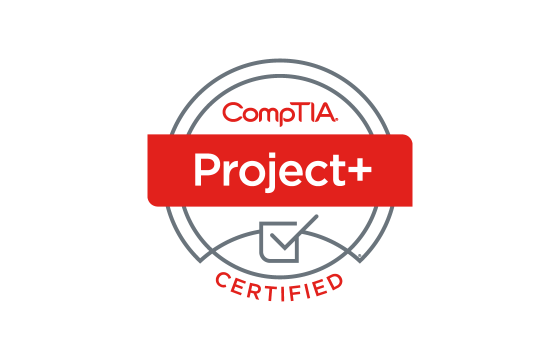
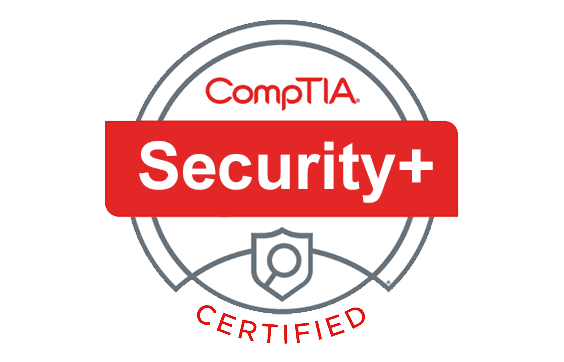





Thanks to ExamCollection, I got some useful dumps that helped me to pass the test and get 801/900. I’m very glad with the results.
Thanks to ExamCollection I finally earned my promotion after passing the exams. Many people ask me questions on how to study for the CompTIA A+ exams. My advice is to use the official guide and the resources from this site. The guide will help you understand the concepts, while the Q&A that you can get here will help you to test your skills. If you apply these two techniques, you will never go wrong.
I have no IT experience but needed A+ to get into the college program. I registered for my exams and read dumps and also books. These resources provided me with good practice, which helped in answering the exam questions. Eventually, I passed both tests on the first try.